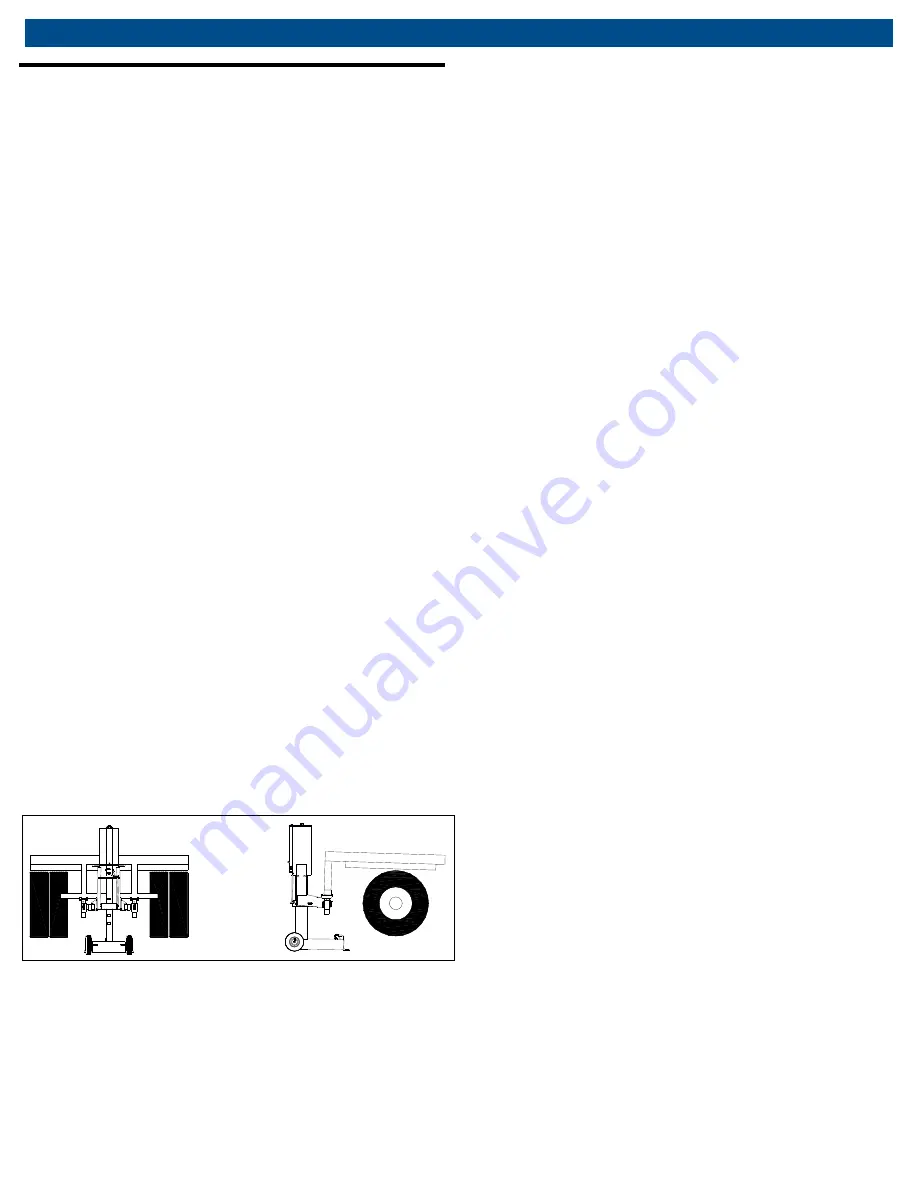
en
|
10
|
CAL-10
Operation
7.7
Lifting a trailer
In addition to lifting vehicles, this lift can be used to lift
trailers. It is important that the box or flatbed trailers
be EMPTY prior to lifting to ensure that any weight
imbalance in the load does not cause a tip-over when
the load is lifted. Also, box and flatbed trailers should
be disconnected from their tractors and should be
resting on their front supports.
Do not lift the trailer by the ICC bumper if the trailer
manufacturer has not designated it as an approved
lifting point. In preparing to lift an EMPTY box or
flatbed trailer, you should inspect the rear ICC
bumper to make sure it is not bent or damaged in any
way. If this bumper is damaged, consult the
manufacturer to determine if there is an alternate
lifting location. Roll the lift into place; make sure it is
centered in the trailer and bumper. Make sure that the
lift saddles on the lift frame fully engage (cradle) the
bottom of the bumper and that the saddle horns are
positioned front to back to ensure that the bumper is
resting on the face of the saddle and is captured
between the saddle horns—this prevents the bumper
from slipping off the saddles when lifted.
The proper lift points on an ICC bumper are directly
beneath the vehicle structure members (Fig.
4), which
connect with the frame and are approximately 34
inches apart in width. Slowly raise the lift frame to
engage the bottom of the bumper. Raise the rear of
the trailer to the desired height and then install vehicle
stands of the proper capacity to support the trailer.
Once the stands are in place, lower the trailer onto
them and then remove the lift from the work area.
Follow the instructions for lowering when work is
completed.
Fig. 4: Lifting trailer


































